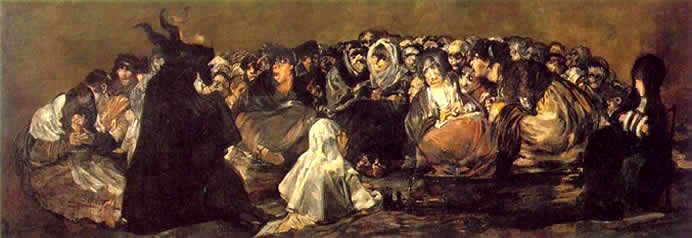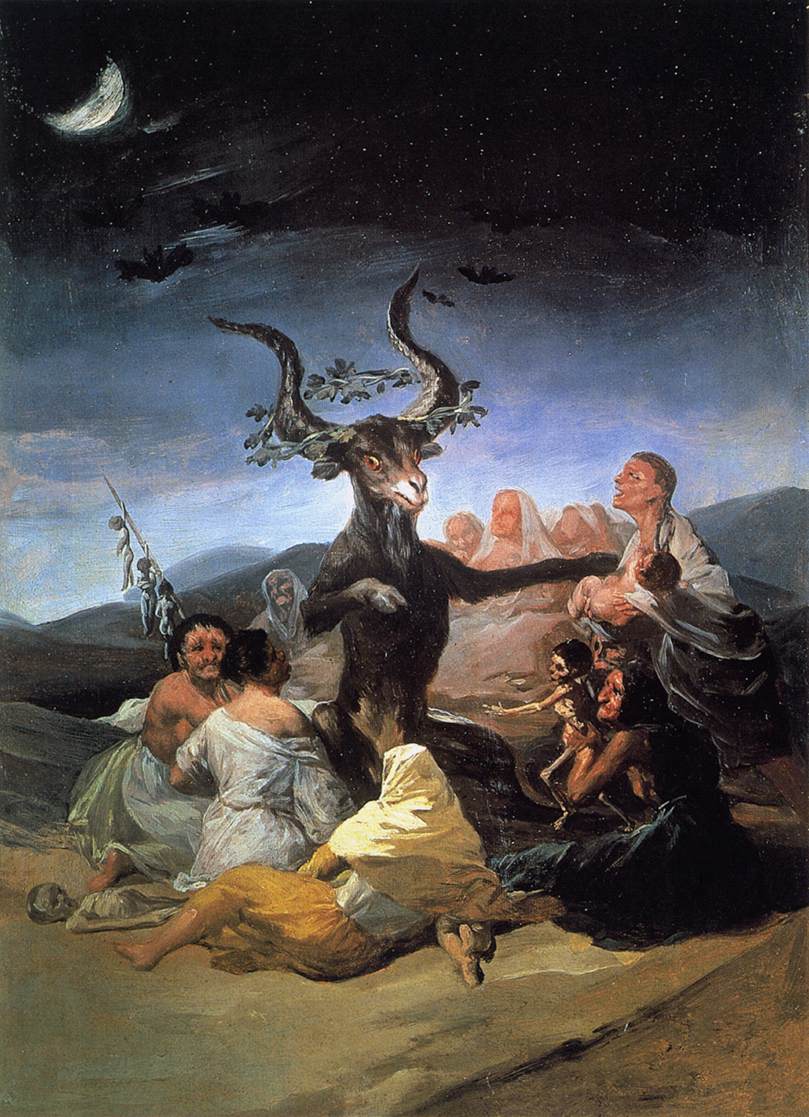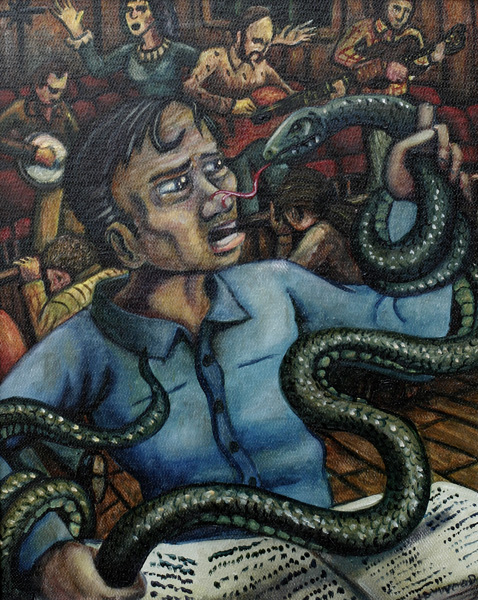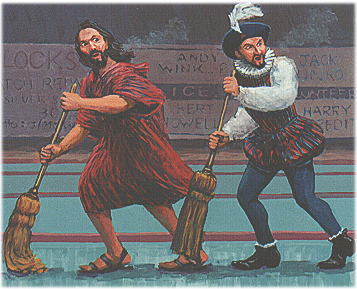O.K. its a deal the devil said…Just put your John Doe on the dotted line.Obviously, God was far too unreasonable to deal with, too intractable and demanding, pushing the faithful into the arms of the Devil for whom there is no substitute.Everything seemed fine, until the darn metaphysics got in the way and ruined everything.
Evangelist preacher Pat Robertson has catalyzed the secular and religious with controversial, yet calculated remarks that Haiti suffered from a devastating earthquake because of its “pact with the devil”. The Reverend continues to stir curiosity and outrage. Jim Wallis, a prominent progressive Christian leader, gave this assessment: “As a Christian leader, I have had to spend too much of my time trying to overcome an image of Christianity that was created by the likes of Pat Robertson,” he wrote. “When evil strikes, it’s easy to ask, where is God. The answer: God is suffering in the midst of the evil with those who are suffering.” …His comments come straight out of a blend of theology and history that, at the grassroots, pervades Haiti’s political discourse,” Robert Taber, a doctoral candidate in Carribbean History at the University of Florida, wrote at FiveThirtyEight.

Goya. The Great He Goat.'' In his painting ‘The Sabbath’ or ‘The Great Goat’, he showscross dressing men engaging in a witches sabbath. This was part of a group of paintings that came to be known as the ‘Black paintings’, paintings showing dark and horrific scenes of the degeneration of man,: a subject Goya was fascinated with.''
”The Haitians “were under the heel of the French. You know, Napoleon III and whatever,” Robertson said on his broadcast Wednesday. “And they got together and swore a pact to the devil. They said, ‘We will serve you if you will get us free from the French.’ True story. And so, the devil said, ‘OK, it’s a deal.’ “You know, the Haitians revolted and got themselves free. But ever since, they have been cursed by one thing after the other.”
Robertson has previously linked natural disasters and terrorist attacks to legalized abortion in the United States. Soon after Hurricane Katrina ravaged the Gulf Coast, killing more than 1,800 and wreaking unprecedented devastation on New Orleans, Louisiana, Robertson weighed in with his own theory.”I was reading, yesterday, a book that was very interesting about what God has to say in the Old Testament about those who shed innocent blood. And he used the term that those who do this, ‘the land will vomit you out.’ … But have we found we are unable somehow to defend ourselves against some of the attacks that are coming against us, either by terrorists or now by natural disaster? Could they be connected in some way?”
To a thinker like Jean Jacques Rousseau ( 1712-1778 ) the idea of attribution and direct connection between God and a tragic happening would appear absurd. The retribution/ reward between the saint and the sinner would seem a duplicitous example of arrogance.To Rousseau the purposes of God were unfathomable, as they are to most of us, and he derided as empty metaphysics any attempt to explain them. However, like Robertson, Rousseau believed in the hypothesis that the universe was the purposeful creation of a Supreme Being. To Rousseau, this seemed to him to be incontrovertible simply because he ”felt” it to be true, and who could convince him that he did not feel what he felt?.
Unlike Robertson, Rousseau did not find it possible to ascribe the sad state of of our affairs to the Fall of Adam and Eve. To suppose that God would be so unreasonable and, one might say, inhuman as to create man simply in order to punish him for acting human went counter to reason and feeling. ” Everything is good as it leaves the hands of the creator; everything degenerates in the hand of man”, and the opening sentence of The Social Contract, ” Man is born free and everywhere he is in chains”, are two formulations of the same central theme to which Rousseau remained consistent. Then why did everything degenerate in the hands of man? In answering the question, Rousseau substitutes for the devil and Original Sin a new hypothesis: man is born good, but society corrupts him.
On a lighter note, pacts with the Devil have not been an exclusive contract with Haitians. Appearances have also been cited in Canada. The original version of The Black Bonspiel of Willie MacCrimmon ,was written by W.O. Mitchell. Set on the Canadian prairies it concerns the dream of Willie MacCrimmon, a philosophical shoemender, to win the MacDonald Brier, the Super Bowl of curling. To achieve this Willie gambles a curling-match against the Devil, in exchange for his soul, and wins by a trick worthy of his antagonist: in mending the Devil’s curling-boot he has placed a small silver rivet under t
ole,thus proving that Satan can be outwitted and lied when he said he belonged to Mensa.A sub-plot concerns a conflict between the ladies and the men of the town over Sunday curling. In the early versions, the minister Pringle agrees to turn a blind eye to the infraction of the Sabbath Act, since the Devil of course curls only on the Sabbath. In the final stage form, the dizziness of Malleable Brown, Willie’s third, results in the substitution of Pringle for the Wild Rose rink against the forces of Hell, the Devil, Judas Iscariot and MacBeth. Thus an amusing tale was turned into a comic, contemporary version of the Faustus myth.
One characteristic of the devil is that he is not prejudiced. According to Nobel prize winning writer,Isaac Bashevis Singer, The devil or dybbuk is definitely not anti-semitic. in 1943 Singer returned to a very old-fashioned literary form,pioneered by Sholom Aleichem and he perfected it on many levels simultaneously. He created some magnificent monologists such as Gimpel the Fool, the woman speaker in a story called “The Wife Killer.” He created a whole series of monologues with the devil, who became his major mouthpiece.The dybbuk was the central theme in Satan in Goray, which is quite modernist. He ends the novel twice. He has a realistic ending, and then he has a storybook ending. The literary presence that runs away with the book is a dybbuk. He creates this dybbuk who starts blaspheming, and ripping apart the whole plot and the veneer of civility, and it gave the story a completely different read, which had nothing to do with everything that was understood to be the novel. Both the writer and dybbuk were brilliant, worthy of the Nobel.
Singer was one of the first writers to give the devil his due by making him the master storyteller.First he places the reader on familiar ground…. We hear a voice. A highly articulate, Judaically knowledgeable, brilliantly idiomatic voice telling the story—only it’s the devil. And it’s the devil incarnate. The real modernism and the genius of the literary approach, is that it’s narrated by the id. The devil becomes the spokesperson and the driving force of the id, who then proceeds to enter into the consciousness,the minds of each one of his victims,and adopts the voice and the sensibility, and the reading material of each one of his victims in turn. He is dramatizing the id, the force of evil, the demonic within each one of us in a way that it’s never been done before.
”It is in Bilgoraj that he was nourished by the superstitions and Yiddish folktales of devils and dybbuks, by the traditions of the Kabala and stories of seventeenth-century battles over messianism and false messiahs. Out of this sensibility came stories such as “Gimpel the Fool” and “Zeidlus the Pope,” where he gave voice to the devil in a literary style Moskies terms “demonic realism,” which is, according to Moskies, “Where evil is metaphysical and that metaphysical evil is real.”
In another story, “The Cafeteria,” Hitler appears in New York to a Holocaust survivor. At first, the narrator simply assumes the woman is insane, but later muses, “I thought about what Esther had told me of seeing Hitler in the cafeteria. It had seemed utter nonsense, but now I began to reappraise the idea. If time and space are nothing more than forms of perception, as Kant argues, and quality, quantity, causality are only categories of thinking, why shouldn’t Hitler confer with his Nazis in a cafeteria on Broadway? Esther didn’t sound insane. She had seen a piece of reality that the heavenly censorship prohibits as a rule. She had caught a glimpse behind the curtain of the phenomena.”
Singer’s fascination with the natural and supernatural elements of Yiddish folktales is, ironically enough, what gives his work such a modern sensibility. For he does not simply describe devils and dybbuks, but uses them as metaphors for the contemporary world. ”( Caroline Kim-Brown)











 COMMENTS
COMMENTS